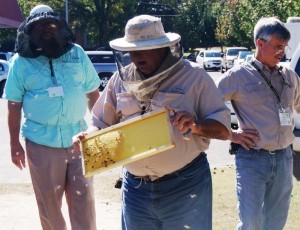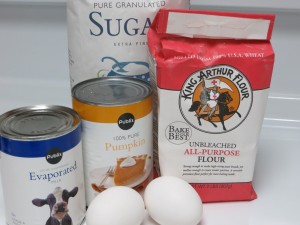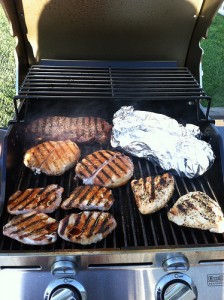by Marjorie Moore | Dec 2, 2013
On November 1-2, 2013, the Northwest District Agriculture and Family and Consumer Sciences (FCS) Agents Program Implementation Teams collaborated to offer classes during the annual Beekeeping Field Day and Tradeshow held in Chipley, FL.

Attendees learn about bee hive maintenance.
This third-annual event was part of the Florida State Beekeepers Association yearly conference and had a total of 196 attendees for the entire three-day event. State Representative Marti Coley and State Senator Greg Evers were keynote speakers at the Bee Conference.
Approximately 163 individuals attended the entire Saturday Beekeeping Field Day and Trade Show, with 114 attending the FCS honey program. Participants rotated among three 35-minute classes – What’s the Buzz about Honey?, Splitting Beehives, and Products of the Hives.
Noted scientist Dr. Jamie Ellis of the University of Florida IFAS Honey Bee Research and Extension Lab presented a class on the state of the beekeeping industry and how Extension works with beekeepers to enhance the success of their honey production and pollination operations.
The FCS Agents presented information on sugar vs. honey, nutrition facts, diabetes and honey, foodborne illnesses, and types of honey. A honey factsheet and recipe cards were developed and distributed. Participants sampled recipes made with honey, including pumpkin bread, honey lemonade, and a honey-glazed snack mix. One batch of the pumpkin bread was made with honey and one batch with sugar to demonstrate the different properties of these two sweeteners.
There was a panel of experts discussing scouting bee hives for insect and disease problems. Also, attendees participated in hands-on hive splitting and hive smoker lighting demonstrations taught by bee inspectors from the Florida Department of Agriculture and Consumer Services.
For more information on honey or beekeeping, please contact your local UF/IFAS Extension Office.
Source: Dr. Marjorie Moore, Family & Consumer Sciences Agent, Bay County, and Matthew Orwat, Horticulture Agent, Washington County.
by Marjorie Moore | Nov 5, 2013

Store homemade pumpkin pies in the refrigerator.
To refrigerate pumpkin pies or not to refrigerate? That is the question. You have seen pumpkin pies in the bakery section of supermarkets not refrigerated and you wonder if you can do the same at home. Unfortunately, homemade pumpkin pies need special care to prevent foodborne illness. Pumpkin pies are a custard-style pie made by using potentially hazardous foods such as eggs and milk. Food temperature controls are especially important with foods classified as potentially hazardous.
Pumpkin pies also have a high moisture and protein content. They must be kept at a refrigerated temperature of 41° F or cooler. If the pies are left out of the refrigerator for more than 2 hours, bacteria grows more rapidly and can cause a foodborne illness.
When cooking, make sure to test your pies for doneness by inserting a clean knife in the center. The knife should come out clean. Remove the pies from the oven and allow them to cool at room temperature for about 30 minutes. After they have cooled, cover and refrigerate to keep them cold.
So, why are pumpkin pies displayed at room temperature at the supermarket? These pies are formulated with shelf-stable ingredients, such as preservatives, that prevent harmful bacteria from growing. Commercial pies must be properly labeled, “approved by the Food and Drug Administration”. They will carry the letters “RT”, which means they meet the guidelines required for display at room temperature. The label will also give a “sell by” or “use by” date. Even these pies should be refrigerated for storage at home especially after they have been cut.
Additional pie safety tips include making sure you purchase clean, refrigerated and uncracked eggs. Keep hands clean by washing them with warm water and soap before handling ingredients. Also, wash utensils, equipment and work surface area with hot soapy water before and after contact with eggs. Never leave milk or eggs out of the refrigerator for more than two hours.
Enjoy those traditional holiday feasts, but keep them safe!
by Marjorie Moore | Jun 21, 2013
Kids out of school, going to the beach, barbequing in our back yards, these are just a few signs that summer is really here! And with that comes some extremely hot days, especially here in Florida.
As you welcome summer, we want to remind you that safe grilling practices are the key to making your cookout a big hit with your family and guests.
Foodborne illness, often called “food poisoning”, comes from food you eat. It’s caused by ingesting pathogenic bacteria. You can’t see, smell, or taste these pathogens. What’s more, they cause a variety of foodborne illnesses and can make you really sick.
E. coli 0157:H7 and Salmonella are examples of two pathogens that are commonly associated with foodborne illness. E. coli 0157:H7 is commonly associated with ground beef and Salmonella with poultry but they are not limited to these two foods.
To reduce your chances of a foodborne illness when grilling out, keep your surfaces and equipment clean. Keep hands clean by washing them with soap and warm water for 20 seconds before and after handling food.
Keep food in the refrigerator until ready to use. Your refrigerator temperature should be 40°F or colder. These temperatures slows the growth of bacteria.
Always keep raw meats and poultry separate from cooked foods and foods to be eaten raw such as fruits and vegetables. Juices from raw meats can contaminate these foods. When grilling meat and poultry, they tend to cook very fast and may look done on the outside. Always use a thermometer to be sure the food has reached a safe, minimum, internal temperature. Insert the thermometer in the thickest part of the food away from the bone and fat toward the end of the cooking process.
If cooking ground beef, cook patties to a temperature of 160°F. Do not rely on color to test for doneness. Use a thermometer! Cook steaks to a temperature of 145°F to 170°F. The temperature for steaks depends on whether you want it medium rare, medium or well done. Ground beef is cooked to a higher temperature because bacteria that may have been on the outside of the meat is now mixed throughout the meat. All poultry must be cooked to an internal temperature of 165°F. Once meat or poultry are cooked, never put it on the same dish that your raw meat was on unless the dish has been washed with soap and water.
Always marinade foods in the refrigerator. Never use marinade or sauce that has come in contact with the raw product. Brush or sprinkle sauces or spices on the surface of cooked burgers. Adding them to the meat may make it look brown before it is done.
Do not keep grilled food out longer than two hours or one hour if the temperature is above 90°F! Avoid the “danger zone” — keep food hot after cooking (140°F or above) and cold food cold (40°F or less).
If you would like to contact Dr. Moore for more information, you can reach her at the UF/IFAS Bay Extension Office at 784-6105.



